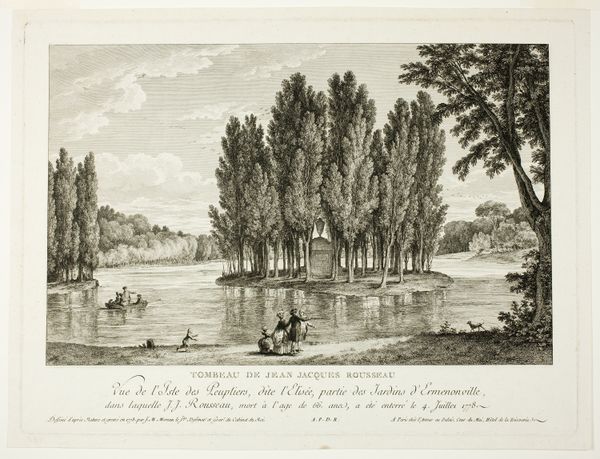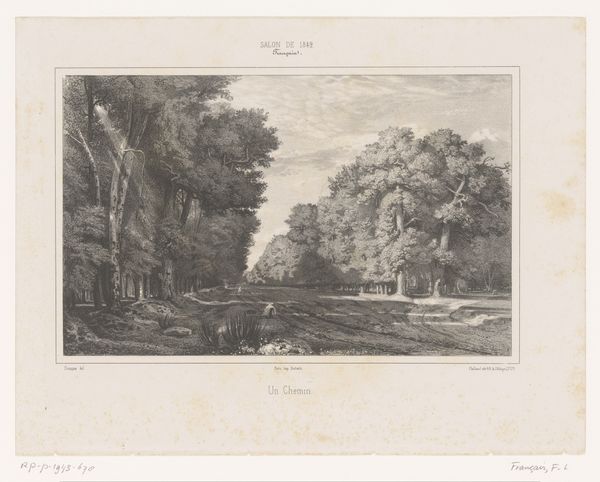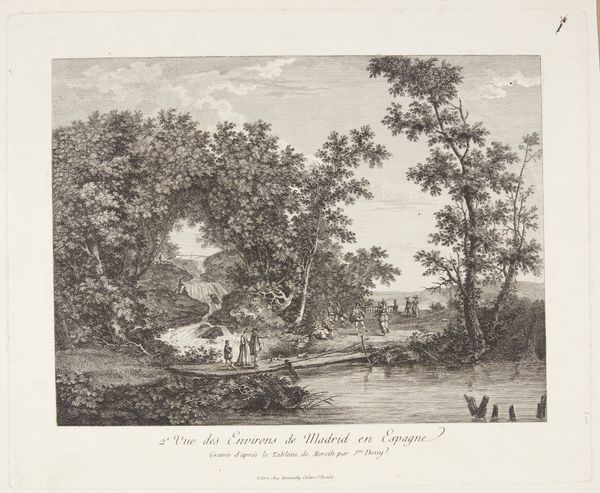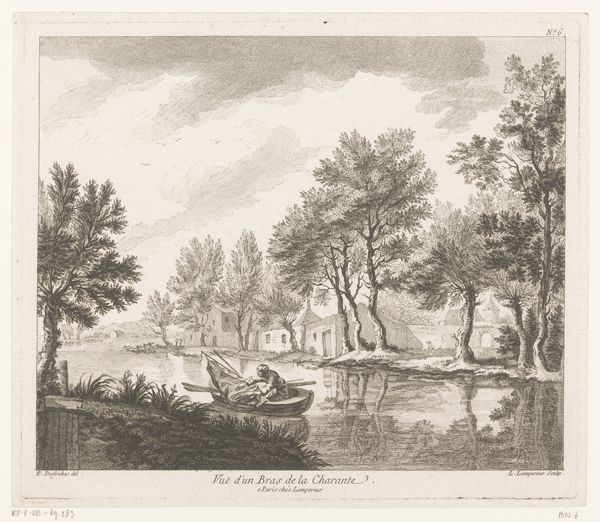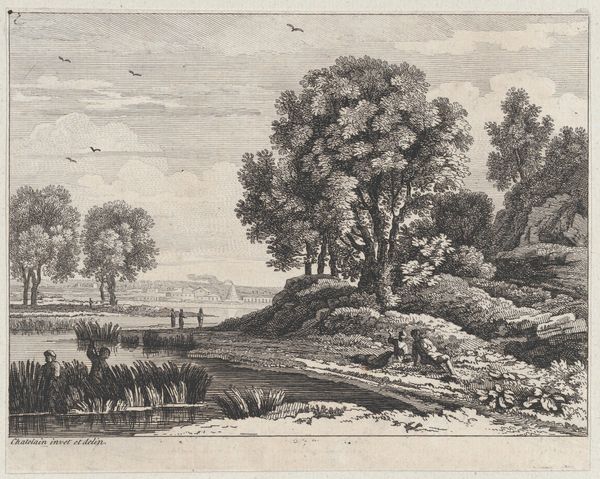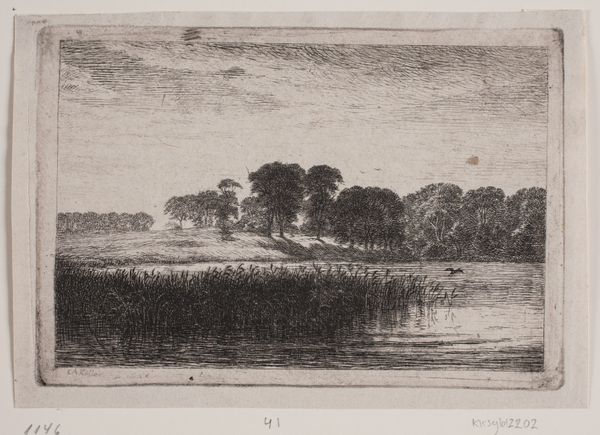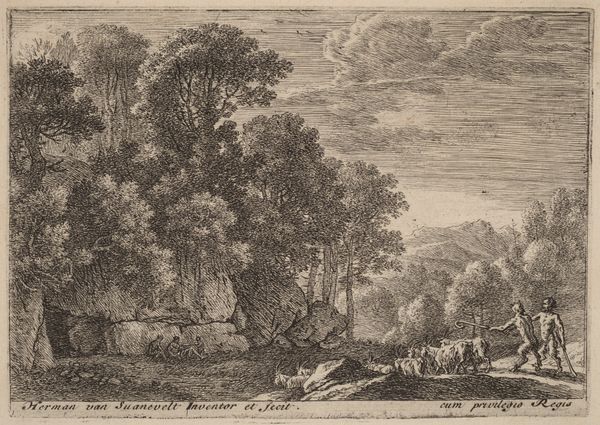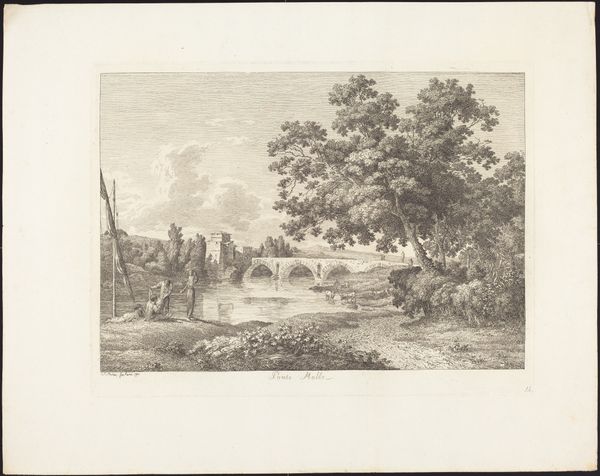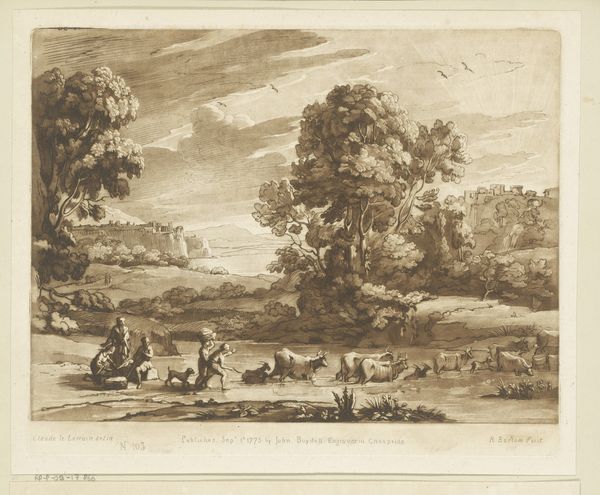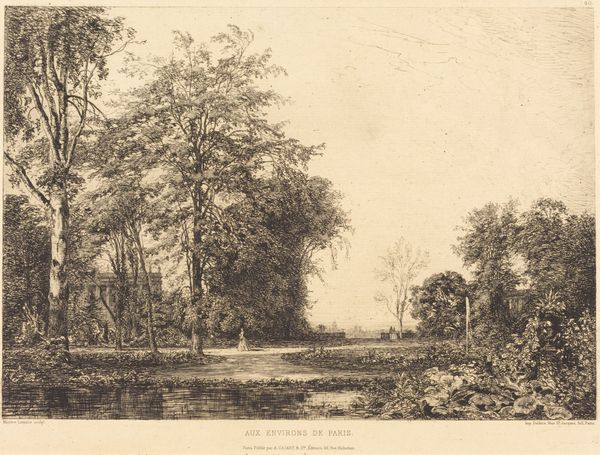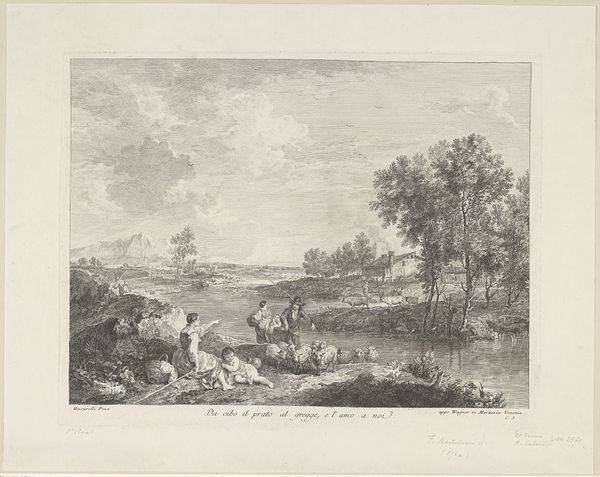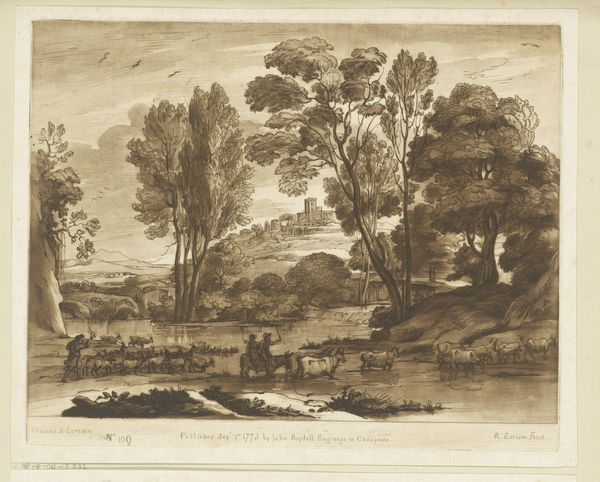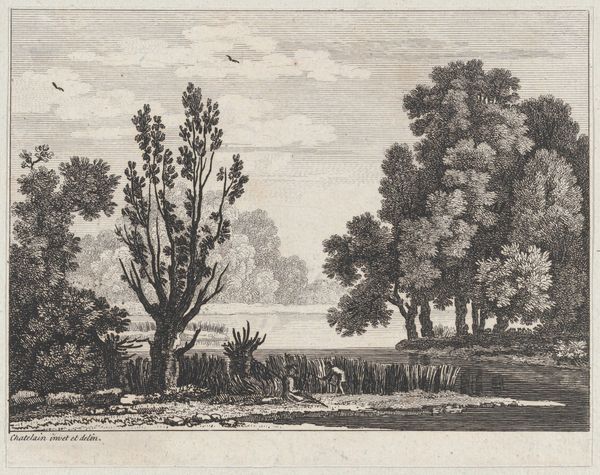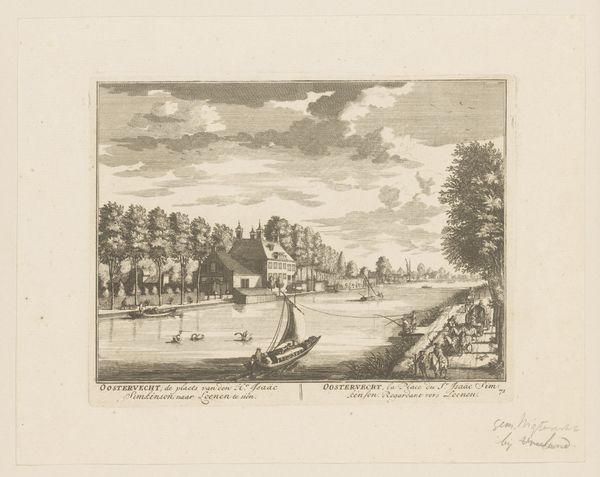
Dimensions: image: 15.56 × 26.99 cm (6 1/8 × 10 5/8 in.) plate: 21.91 × 32.86 cm (8 5/8 × 12 15/16 in.) sheet: 35.88 × 52.71 cm (14 1/8 × 20 3/4 in.)
Copyright: National Gallery of Art: CC0 1.0
Editor: This is Charles Volkmar’s "Landscape with Hay Wagon," from around 1875. It’s an etching, a technique that really emphasizes line work. The scene feels tranquil, rural, almost idyllic. I'm curious, what do you see in this piece, particularly given its materiality? Curator: For me, the immediate question is the labor embedded in the creation of this print. Volkmar didn’t just spontaneously *imagine* this landscape; he chose a specific site, observed it, likely made sketches, and then engaged in the demanding physical process of etching. Each line represents deliberate action. We must also acknowledge how this rural scene obscures the labor *of* the rural worker; the etching aesthetic sanitizes agrarian life. Does that make sense? Editor: Yes, it does. So you’re saying the print itself, its production, its purpose as a "gift," potentially conceal a lot about the economic realities of the time? The inscription says 'Compliments of Chas Volkmar,' as in, he’s gifting this. Curator: Exactly. This “gift” becomes a commodity circulating within a specific social and economic sphere. Romanticism here serves not as mere artistic sentiment but functions within an economic and social exchange. Furthermore, think about the *consumption* of such images. Who owned them? What kind of spaces did they inhabit? These questions connect the object to broader material and social networks. The medium isn't just the message, it’s a conduit for understanding class, labor, and modes of exchange in the late 19th century. Editor: I hadn't considered the social life of the *print itself*, how its creation and circulation tell a story about the society that produced it. Curator: Precisely! This challenges us to move beyond appreciating it solely for its aesthetic qualities. Material analysis allows us to unravel these interwoven threads. Editor: That definitely changes my perspective. I see the print not just as a pretty landscape, but as evidence of a complex network of labor, consumption, and social exchange. Thanks for pointing that out. Curator: Absolutely, that deeper connection is often hidden, waiting to be revealed.
Comments
No comments
Be the first to comment and join the conversation on the ultimate creative platform.
